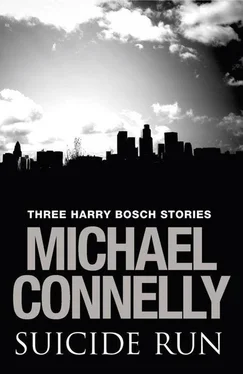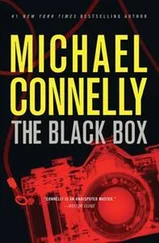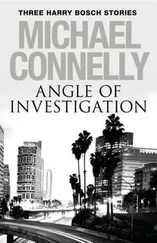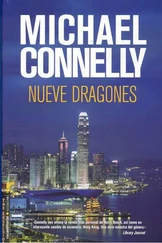Using angled light to study the impression, Corazon found that she could clearly see the number 1, the letter J and part of a third letter that could have been the upper left stem of an H, a K or an L.
“A license plate,” I said when she called me to the autopsy suite to view the discovery. “He put her down on a license plate.”
“Exactly,” said Corazon.
We formed the theory that whoever had killed the girl with no name had hidden the body in the trunk of a car until it was nighttime and safe to dump it. After carefully cleaning the body, the killer put it into the trunk of his car, mistakenly putting it down on part of a license plate that had been taken off the car and also placed in the trunk. That part of the theory was that the license plate had been removed and possibly replaced with a stolen plate as one more safety measure that would help the killer avoid detection if his car happened to be spotted by a suspicious passerby at the Mulholland overlook.
Though the skin impression gave no indication of what state issued the license plate, we decided to go with the percentages. From the state Department of Motor Vehicles we obtained a list of every car registered in Los Angeles County that carried a plate beginning 1JH, 1JK and 1JL.
The list contained over three thousand names of car owners. We then cut forty percent of those names by discounting the female owners. The remaining names were slowly fed into the National Crime Index computer and we came up with a list of forty-six men with criminal records ranging from minor to the extreme.
The first time I studied the list of forty-six, I knew. I felt certain that one of the names on it belonged to the killer of the girl with no name.
The Golden Gate lived up to its name in the afternoon sun. It was packed with cars going both ways and the tourist turnoff on the north side had the LOT FULL sign up. I kept moving, into the rainbow-painted tunnel and through the mountain. Soon enough I could see San Quentin up on the right. A foreboding-looking place in an idyllic spot, it housed the worst criminals California had to offer. And I was going to see the worst of the worst.
“Detective Bosch?”
I turned from the window where I had been looking down at the white stones of the veterans cemetery across Wilshire. A man in a white shirt and maroon tie stood holding open the door to the FBI offices. He looked like he was in his midthirties, with a lean build and healthy look about him. He was smiling.
“Terry McCaleb?”
“That’s me.”
We shook hands and he invited me back, leading me through a warren of wood-paneled hallways and offices until we came to his. It looked like it might have been a janitor’s closet at one time. It was smaller than a solitary-confinement cell and had just enough room for a desk and two chairs.
“Guess it’s a good thing my partner didn’t want to come,” I said, squeezing into the room.
Frankie Sheehan alternately referred to criminal profiling as “bureau bullshit” and “Quantico quackery.” When I had chosen a week earlier to contact McCaleb, the resident profiler in the bureau’s L.A. office, there had been an argument about it. But I was lead on the case; I made the call.
“Yeah, things are kind of tight here,” McCaleb said. “But at least I get a private space.”
“Most cops I know like being in a squad room. They like the camaraderie, I guess.”
McCaleb just nodded and said, “I like being alone.”
He pointed to the guest chair and I sat down. I noticed a photo of a young girl taped to the wall above his desk. She looked to be about the same age as my victim. I thought that if it was McCaleb’s daughter, maybe it would be a little plus for me. Something that would make him put a little extra drive into my case.
“She’s not my daughter,” McCaleb said. “She’s from an old case. A Florida case.”
I just looked at him. It wouldn’t be the last time he seemed to know my thoughts like I was saying them out loud.
“So, still no ID on yours, right?”
“No, nothing yet.”
“That always makes it tough.”
“So on your message you said you’d reviewed the file?”
“Yeah, I did.”
I had sent copies of the murder book and all crime scene photographs the week before. We had not videotaped the crime scene and this distressed McCaleb. But I had been able to get tape of the scene from a television reporter. His station’s chopper had been in the air over the crime scene but had not aired any footage because of the graphic nature of its contents.
McCaleb opened a file on his desk and referred to it before speaking.
“First of all, are you familiar with our VICAP program-Violent Criminal Apprehension?”
“I know what it is. This is the first time I ever submitted a case.”
“Yes, you’re a rarity in the LAPD. Most of you guys don’t want or trust the help. But a few more guys like you and maybe I can get a bigger office.”
I nodded. I wasn’t going to tell him that it was institutional distrust and suspicion that stopped most LAPD detectives from seeking the help of the bureau. It was an unspoken dictate that came from the police chief himself. It was said that the chief could be heard cursing loudly in his office every time news of an FBI arrest within city limits was reported. It was well known in the department that the bank robbery squad routinely monitored the radio transmissions of the bureau’s bank squad and often moved in on suspects before the feds got the chance.
“Yeah, well, I just want to clear the case,” I said. “I don’t really care if you’re a psychic or Santa Claus, if you’ve got something that will help me I’ll listen.”
“Well, I think maybe I do.”
He turned the page in the file and picked up a stack of crime scene photographs. These were not the photos I had sent him. These were 8x10 blowups of the original crime scene photos. He had made these on his own. It told me that McCaleb had certainly spent some time with the case. It made me think that maybe it had hooked him the way it had hooked me. A girl with no name left dead on the hillside. A girl no one had come forward to claim. A girl no one cared about.
In my secret heart I cared and I had claimed her. And now maybe McCaleb had, too.
“Let me just start with my overview of what I think you’ve got here,” McCaleb said.
He shuffled through the photos for a moment, ending with a still that had been made from the news video. It showed an aerial shot of the naked body, arms and legs stretched wide on the hillside. I took out my cigarettes and shook one out of the pack.
“You may have already arrived at these same conclusions. If so, I apologize. I don’t want to waste your time. By the way, you can’t smoke in here.”
“Don’t worry about it,” I said, putting the smokes away. “What have you got?”
“Whether this is the actual murder site or not, this scene is very important in that it gives us an avenue to the killer’s thinking. What I see here suggests the work of what we call an exhibition killer. In other words, this is a killer who wanted his crime to be seen-to be very public-and by virtue of this to instill horror and fear in the general population. From this reaction by the public he draws his gratification. He is somebody who reads the newspapers and watches the news for any information or update on the investigation. It is a way of keeping score. So when we find him, I think we will find newspaper clippings and maybe even videos containing television reports on the case. These will probably be in his bedroom because they would be useful to him in carrying out masturbatory fantasies.”
I noticed he had said we in reference to the case investigators but I didn’t react. McCaleb went on as if he were talking to himself and there were no one else in the office.
Читать дальше












![Майкл Коннелли - The Night Fire [Harry Bosch - 22]](/books/405630/majkl-konnelli-the-night-fire-harry-bosch-22-thumb.webp)